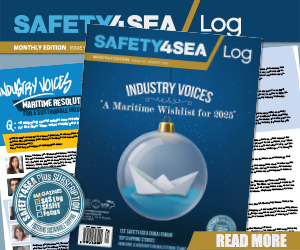MSC has recently published a new white paper to support customers with the transition from paper-based Bills of Lading to the electronic Bill of Lading (eBL).
The guide, entitled ‘How to Navigate the Transition from Paper Bill of Lading (BL) to eBL’, discusses the differences between the paper and electronic versions of BL documents, as well as the key advantages offered through adoption of the digital alternative.
What is a Bill of Lading?
A bill of lading is a contract issued by a carrier (shipping line), or by the agent, to the owner of the goods shipped, to acknowledge receipt of cargo for shipment.
The document basically states what goods are being shipped, as well as where the shipment is coming from and heading to.
What is the eBL?
As explained, the eBL is a digital version of the Bill of Lading. It replicates the exact function of the Bill of Lading without the need of a paper document. All parties involved in a cargo shipment looking can handle, transfer, endorse, surrender and manage the bill of lading electronically through a secure network. Just like the regular Bill of Lading, the digital document can only be accessed by one party at a time.
According to the paper the five key advantages of eBL, are the following:
#1 Safer
No risk of document loss, forgery or fraud
As a paper document, the paper bill of lading is at risk of being lost, damaged, or subject to forgery. As an official document of title, document tampering can result in illicit shipments, misdeclared cargo, or shipments being released to unauthorised parties.
#2 Faster
The document is transferred in moments instead of weeks
In a single shipment, a single paper Bill of Lading may be couriered up to 10 times, taking several weeks. Any disruptions in transit, or other issues with documentation can cause delays that result in cargo sitting idle at its destination, costing time and money.
#3 Greener
Paperless process, reduced carbon footprint
Around 45 million bills of lading (and billions of pages) are issued by ocean carriers every year. In addition to the carbon emissions associated with couriering the document across the world, the paper bill of lading is an entirely environmentally unsustainable approach to trade documentation.
As a completely digital solution, the eBL is a cleaner, greener and more sustainable approach to trade documentation.
#4 Simpler
Easy to use platform, accessible from any device and available 24/7
The paper Bill of Lading can only be accessed in person, in one specific location. If the authorised party cannot access the physical document for whatever reason, it cannot be actioned.
#5 Cost- efficient
Reduced courier fees, reduced workload and zero paperwork to process or store
From a cost-efficiency perspective, the transition to the eBL represents an enormous cost saving. Fewer administrative costs, courier fees, and costs associated with reissuing lost, damaged or fraudulent Bills of Lading could result in significant annual savings across the industry.
However, as informed, there are many challenges that they must take into consideration.
#1 Interoperability: The primary barrier to adoption of the eBL is interoperability. The paper Bill of Lading is accepted globally by all parties. As a single paper document it requires no special platform or tools to access. The same document works for all shippers, banks, customs, and carriers, wherever they are in the world. This same level of interoperability is essential for the eBL, and replicating the existing process is a key step to reducing the friction in adoption. The fewer process changes that need to be made, the easier it is to adopt.
The challenge however is that each technology solution provider approaches the eBL in its own way. These differences, if not addressed early, mean that we could end up with platform-exclusive eBLs.
#2 Multi – stakeholder support
As the most important document in shipping, the Bill of Lading involves many different parties. Between shippers, carriers, customs, banks, insurers and regulators; the 100% adoption target of the eBL will depend on each party recognising the importance of the eBL, and integrating it into their operations.
But that is easier said than done. The incentives for some are stronger than others, and the friction could make some adoption curves slower than others.
#3 Digitalizing all the document
Achieving the goal of 100% eBL adoption by 2030 is not just a matter of digitalising the BL, it will also require the digitalisation of other documents. The eBL is the first of what will be a digital documentation revolution. As long as a shipment still requires paper documentation, the effectiveness (and perhaps adoption) of the eBL will be limited.
Digitalising global trade documentation involves many stakeholders across the globe, each with their own requirements, restrictions, and ways of operating. Collaboration is key to work through these challenges, and it is inspiring to see the increasing support and commitment toward 100% eBL adoption by 2030.
..the MSC guide notes.

































































